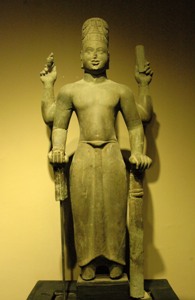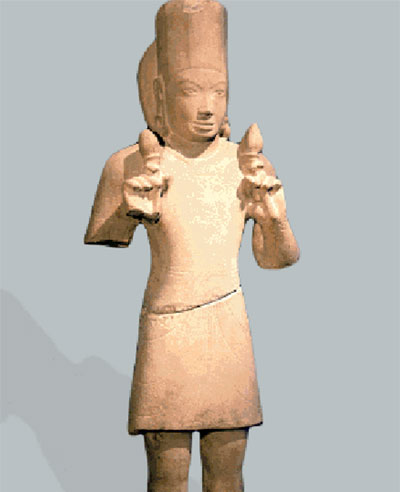Oc Eo culture-significant part of VN's treasure
VGP - The Oc Eo civilization contributes ten sets of ancient objects to the list of 77 national treasures, including a collection of golden items which are kept at the Long An provincial museum.
Oc Eo has been regarded as part of the historical kingdom of Funan that flourished in the Mekong Delta provinces of An Giang, Kien Giang, Dong Thap, Can Tho and Bac Lieu, and part of Cambodia between the 1st and the 6th century CE.
The objects found at Oc Eo archeological site include pottery, tools, jewelry, casts for making jewelry, coins, and religious statues. Among them are gold jewelry imitating coins from the Roman Empire of the Antonine period.
Excavation at Oc Eo began on February 10, 1942 after French archaeologists had discovered the site through the use of aerial photography.
Archeological sites reflecting the material culture of Oc Eo are spread throughout southern Viet Nam, densely concentrated in the area of the Mekong Delta to the south and west of Ho Chi Minh City.
The most significant site, aside from Oc Eo itself, is at Thap Muoi, north of the Tien Giang River, where a stele with a 6th-century Sanskrit text has been discovered, among others.
Among the previous ten Oc Eo objects recognized as the national treasures, there are three Vishnu goddess statues.
 |
 |
 |
Vishnu is the Supreme God of Vaishnavism, one of the three main sects of Hinduism. Vishnu is described as the all-pervading essence of all beings, the master of—and beyond—the past, present and future, the creator and destroyer of all existences, one who supports, preserves, sustains and governs the universe and originates and develops all elements within.
4. Loi My Buddha Statue is currently kept at the History Museum of Ho Chi Minh City. The statue was found on April, 27, 1973 in Loi My village, Dong Thap Province. The 100-kg statue, sculptured from a Trai trunk-tree, is considered a typical piece of Southeast Asia’s sculpture.
 |
Surya is the chief solar deity in Hinduism. Surya is the chief of the Navagraha, Indian "Classical planets" and important elements of the Hindu astrology.
 |
7. Sa Dec Buddha statue is currently stored in the History Museum of Ho Chi Minh City.
 |
9. Statue of Avalokitesvara is being exhibited at the Museum of History in Ho Chi Minh City. Avalokiteśvara is a bodhisattva who embodies the compassion of all Buddhas. Portrayed in different cultures as either male or female, Avalokiteśvara is one of the more widely revered bodhisattvas in the mainstream Mahayana Buddhism, as well as unofficially in Theravada Buddhism.
 |
By Thuy Dung

